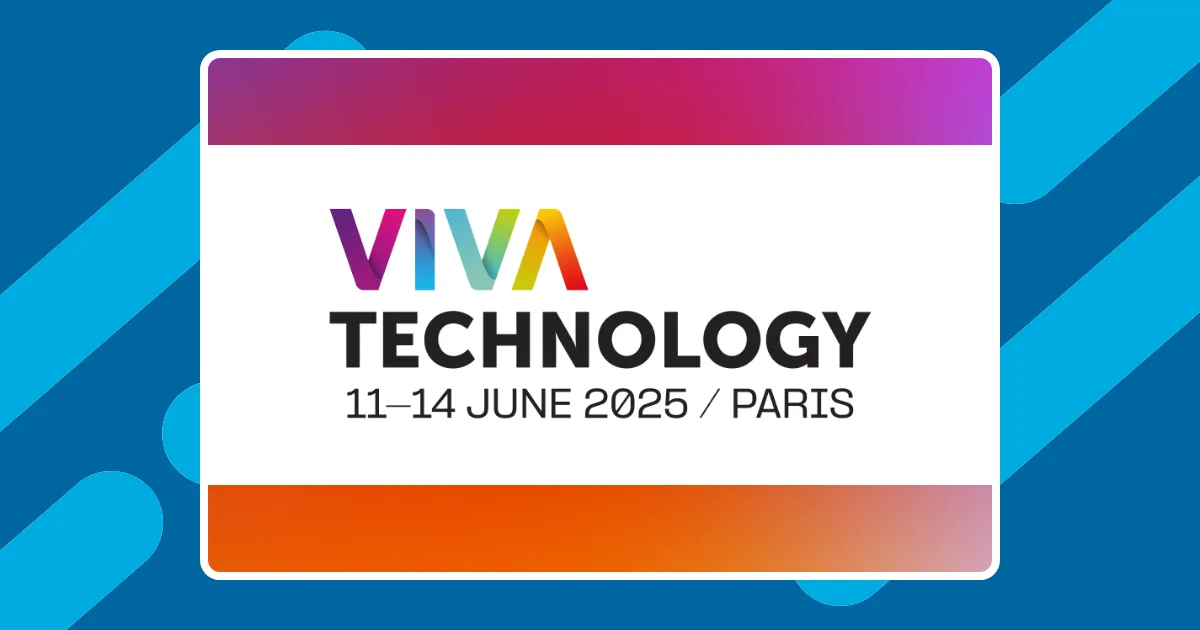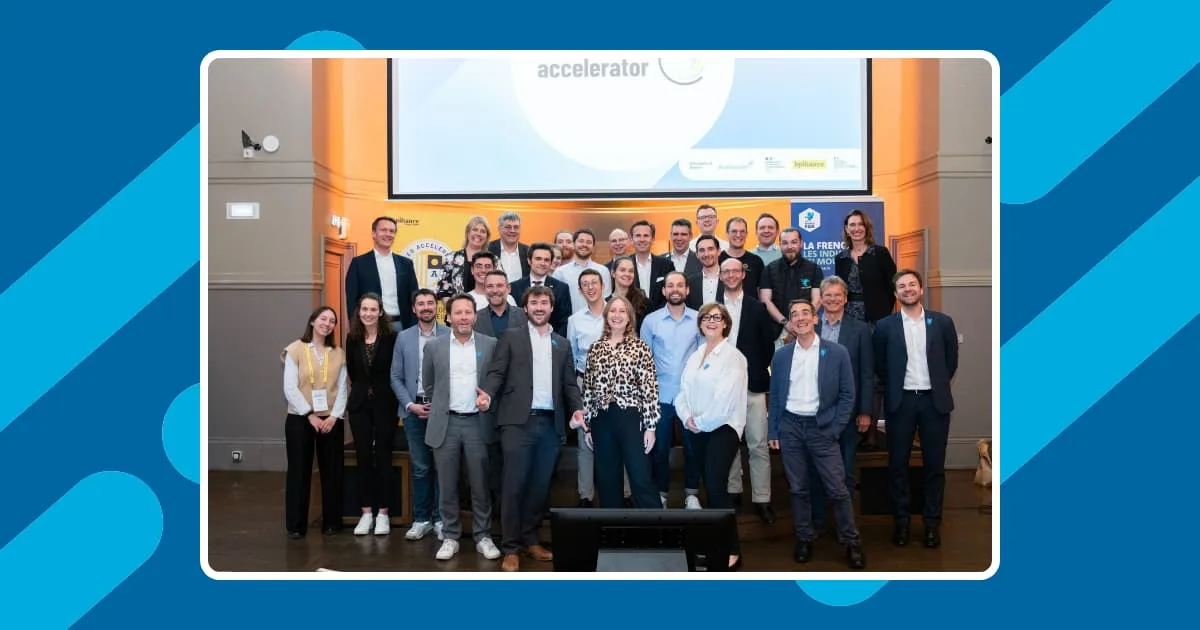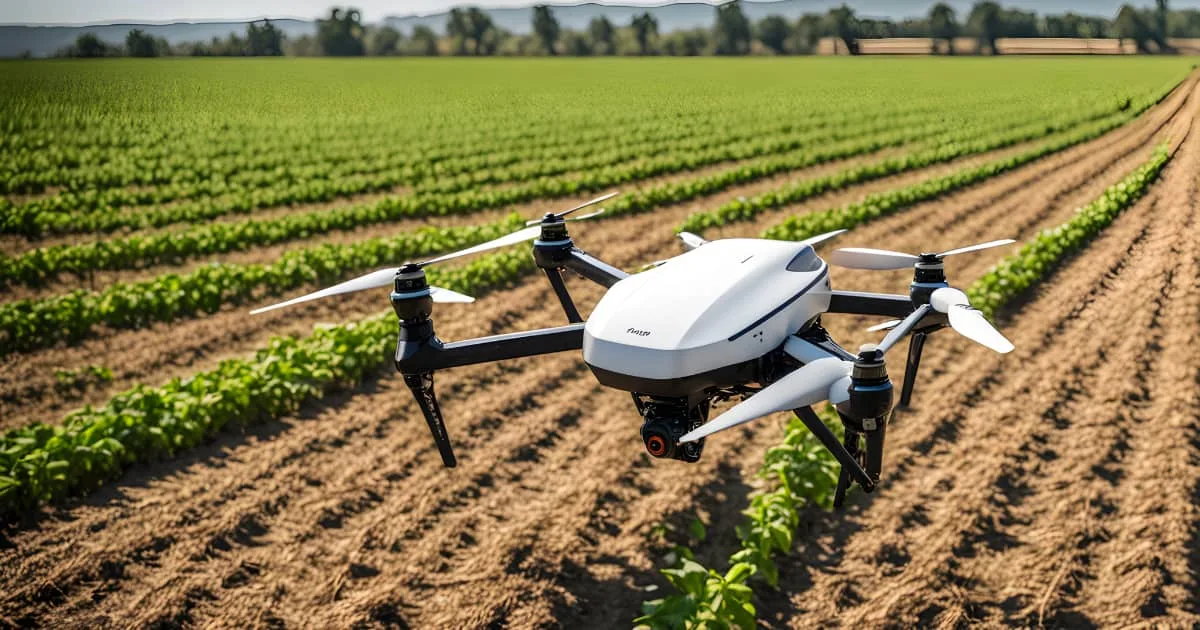Rapid technological advancement has brought innovative solutions in water, sewage, and waste management services.
As such, the smart water management market is projected to reach $$30.8 billion by 2028, growing at a CAGR of 13.89% from 2023 to 20281. The progress will be buoyed by artificial intelligence(AI) and the Internet of Things(IoT) as these technologies hold immense potential to shift to more sustainable solutions.
AI, specifically, opens up new ways to enhance processes across the entire ecosystem. Its integration allows the development of high-impact applications ranging from predictive analytics to monitoring solutions.
In this article, we explore the use of AI in water supply, sewerage, waste, and remediation services. We also detail the different AI applications, the benefits, and the challenges that hinder AI’s adoption.
The role of AI in Water Supply and Waste Management
The water supply industry is moving towards Hydraulic modeling 2.0, highlighting the impact the industry is expecting from modern technologies. AI and machine learning(ML) are pivotal to this progress, as they can help optimize processes and enhance service delivery.
The impact of AI in water supply management
Below are 8 ways AI is impacting water supply services.
Predictive maintenance
AI-based predictive maintenance uses advanced modeling to predict failure at different points in the water distribution network(WDN). Utilities lose more than $14 billion annually. Much of this is from non-revenue water(NRW), which can be as high as 60% in some countries. The primary contributor is aging infrastructure, which causes financial burdens to customers and the provider2.
Existing WDN maintenance methods are normally reactive and corrective. This means maintenance is unscheduled and time-consuming, adversely affecting supply to communities and commercial enterprises. Additionally, reactive measures mainly cover larger water leakages, leaving small ones unattended.
Integrating machine learning models and sensors enhances real-time water flow monitoring. Such solutions can detect anomalies, pinpoint the leak’s location and scale, assisting to hasten repair services.
Predictive models can also help in early fault detection in the WDN. Using sensors and diverse parameters like flow rate, these models can detect anomalies that can prevent the escalation of issues.
Automated asset management
Water infrastructure is facing an onslaught, ranging from aging to human pressure. Managing the network can be expensive due to asset variety and its underground nature. However, using smarter asset management solutions promises to save water utilities $41.9 billion in capital expenditure by 20273.
AI-powered asset management solutions can lower maintenance costs, reduce downtime, and extend asset lifespan. It can augment manual inspection processes using enablers like CCTVs and drones for data collection.
For instance, computer vision applications can process CCTV footage from water mains, pipes, reservoirs, and hydrants. A model can then identify assets’ deterioration and possible failure points.
Flood risk prediction
Flooding can negatively impact water distribution services, contaminating drinking water, destroying infrastructure, and more. Historically, inaccurate flooding predictions have resulted in disasters, like the Brisbane flood event in 20114.
Weather observations such as temperature and rainfall intensity can be collected using sensors. Combining this with hydrological data, supply system data, and remote sensing imagery helps AI models provide insights into flooding characteristics. Correlations between different variables help accurately determine the current water flow and level5.
ML algorithms, such as decision trees(DT), neural networks, and deep learning, analyze this data, resulting in a prediction model. The solution can provide early flood warnings, alerting water distributors of impending overflows.
Multiple flood prediction models have already been developed. For example, an artificial neural network(ANN) created a flood prediction tool for catchments in semi-arid and Mediterranean areas. The forecasts support intelligent management of water resources6.
Water companies also use reservoirs, which are prone to flooding. Algorithms like support vector machine(SVM) can be used to build models determining water inflows during flooding. An accurate forecast helps in decision support, especially on water releases during flooding7.
Monitoring water quality
Human pressure and industrialization are some of the contributors to water pollution. For safe water supply, evaluating parameters like pH and dissolved oxygen is critical.
AI-powered tools can assess water quality by leveraging historical and sensor data8. Additionally, remote sensing technologies can capture data in real-time to reveal the characteristics of pollutants. The solution can be tailored to flag contaminants, predict water quality, and offer insights into maintaining required standards.
Algorithms like SVM and ANN are already in use in Seoul, South Korea, helping the city build its capacity to assess the quality of its ground and drinking water. The solution uses spatial and temporal patterns to determine the waters’ suitability for different functions9.
AI solutions for non-revenue water(NRW)
Resource loss during pumping, storage, and transmission is a real challenge to water providers. According to a World Bank Report, physical water loss is estimated at 32 trillion liters annually10.
AI-driven solutions take advantage of water flow and pressure data from sensors. This data can help in pattern recognition, detecting anomalies, and validating hydraulic models. Providers can use such models to quickly identify losses occasioned by theft, unbilled consumption, and leaks.
Real-time leak detection
About 30% of treated water is lost during transmission11. Detecting and locating leaks within a vast water distribution network can be challenging. Traditional methods like acoustic detection are labor-intensive, skill-dependent, and non-systematic12. On the contrary, AI-based solutions assist in near real-time detection of leakages, enabling failures to be located within hours.
AI models process leakage sounds, flow, and pressure data from sensors. Algorithms like deep neural network(DNN), convolution neural network(CNN), fuzzy inference systems, and Bayesian network can process data, pinpoint leakages and their scales.
Other intelligent solutions implemented for water supply in buildings can accurately detect anomalies, alert managers, and shut down the leaking pipe system13.
United Utilities, a UK-based water provider, uses an AI-based “event recognition in the water network (ERWAN)” system to detect pipe bursts and leaks. As a result, the company now detects failures quicker and more reliably14.
Demand forecasting
Water utilities face tremendous strain in supplying water effectively due to climate change, population increase, and budget constraints. Inaccurate demand forecasts can lead to inefficient pump operations and high operations costs.
An AI-driven approach can augment this process to help companies accurately determine demand side supply. Forecasting models help operators understand water needs based on multiple variables like weather and time of day. Predictions can be made for different intervals, ranging from hours to months.
Multiple algorithms can assist in demand forecasting. Ensemble methods are relatively common due to the complexity of the problem. Other algorithms for this use case are long short term memory(LSTM), random forest(RF), ANN, and principal component analysis(PCA)15.
A municipal utility company in a German city is using AI to forecast water demands for its residents. The solution utilizes historical data, weather, and calendar information to predict future needs. It achieves a 94-96% accuracy for hourly and daily forecasts. The company derives multiple benefits from this solution, including optimal planning16.
Water infrastructure design and optimization
The design of water systems for expansion, reinforcement, and rehabilitation is a complex process. The use of AI can help design engineers generate optimized water distribution networks.
Evolutionary computation techniques like genetic algorithms(GA) can assist engineers solve complex design problems. They can analyze and test multiple possibilities for optimization17.
Engineers can also use generative AI to design efficient and inexpensive water distribution systems18. Solutions by both models can help engineers create multiple designs while experimenting with different input parameters.
AI for sewerage management
There are numerous wastewater sources, including municipal, medical, and commercial. This waste contains organic matter, chemical elements, scrap material, volatile and hazardous compounds.
Traditionally, waste was considered a pollutant and a menace. However, with the proper infrastructure and technology, it can be turned into valuable elements. Eurostat reports that wastewater components have the potential to generate electricity for 25 million households annually and meet 13% of fertilizer needs in the European Union19.
AI-driven solutions can enhance data analysis, allowing plants to optimize treatment parameters while minimizing operational costs and reducing energy consumption.
Removal of pollutants
High expenditures and chemical treatments hamper wastewater treatment. The application of AI is gaining traction in the sector to help overcome traditional complications.
AI tools can assess the effectiveness of the adsorption process, which is responsible for removing contaminants like dyes, drugs, metals, and organic compounds20. Models built with ANN, ANFIS, SVM, and RF have been used to model and forecast the effectiveness of the adsorption process.
CNN models are proficient in identifying different characteristics from spectral data. This can be applied for chemical and micropollutant identification. Additionally, AI-based image analysis and techniques like Raman spectroscopy can be used to detect and identify contaminants21.
Optimization of energy consumption
Wastewater treatment(WWT) plants consume a lot of energy. It’s estimated that these plants require 1% to 3% of a country’s energy output22.
One of the main benefits of using AI-powered solutions for wastewater management is reducing energy consumption. The technology can help WWT plants optimize the operation of valves, pumps, and other equipment. This comes from drawing insights and learning from operational data, real-time sensors, and weather patterns.
The Brembate WWT plant in Italy, serving a population of over 200,000 residents, implemented an AI solution to reduce aeration costs while ensuring effluent quality. The solution saw an aeration energy saving of 25%, while the total power used at the plant was reduced by 13%.
Real-time monitoring
Sensors continuously monitor a plant’s operations. Data from these sensors helps track equipment operations, wastewater effluent, and affluent. For instance, level monitoring helps monitor obstacles, sediment concentration, and FOG(fats, oil, and grease).
Real-time monitoring of WWT infrastructure and processes is critical, and inadequate observation could lead to catastrophic results. For instance, the UK experiences tens of thousands of wastewater pipe blockages yearly23. Such blockages lead to spilling, flooding, and contamination of drinking water.
AI-powered solutions can detect jams at the septage pump station during screening and pumping. It can monitor the incoming flow rates by analyzing video, historical, and real-time data and help operators make pumping decisions24.
Predictive modeling
Pattern recognition and anomaly detection help WWT plants forecast faults and identify issues early. AI’s ability to analyze massive datasets ensures operators have insights into how different processes perform.
Early fault detection and maintenance: Combining AI, IoT sensors, and control systems(such as SCADA) can help build robust systems with pattern recognition capabilities. By monitoring parameters like pressure and flow levels, models can detect anomalies and pinpoint the fault’s location.
Visual inspection and sewer network data can also help with early fault finding. Algorithms like KNN, RF, ANN, and GA can be used to detect and classify pipe defects. Early fault detection can help sewer utilities reduce maintenance costs, spillage incidents, and flooding25.
Predicting effluent quality: Constant monitoring of effluent quality is challenging due to dynamic flow rates and pollutant load. Inefficient measurements lead to high operational expenditures and unsupported decision-making. However, AI’s ability to solve complex nonlinear problems helps with such challenges.
An algorithm like self-organizing fuzzy neural network can help predict effluent quality in real-time26. For instance, the SIWA blockage predictor employs AI to provide warnings for sewer blockages using sensors that collect data about rainfall and wastewater27.
The impact of AI on waste management and remediation services
Waste management is a complex process that involves handling, treating, and mitigating the effects of waste on the environment. The situation is exacerbated by increasing amounts of waste generated worldwide.
The combination of AI and technologies like IoT and big data assists in handling complex problems as the industry transitions to a “Zero waste circular economy”. It provides novel strategies to improve waste management through advanced technologies.
Optimizing trash collection
Greg Lettieri, CEO of RTS, a company that helps manage waste, sees AI changing waste and recycling management. There’s progression across cities, with many shifting to smart waste management using dynamic routing for trucks and higher recycling rates.
Vehicle routing: Costs associated with waste collection are prohibitively high, accounting for 70%-80% of the cost of solid waste management. The use of AI can help optimize problems from constraints like distance, time, and cost.
GA and its hybrid models can be used for route planning and collection frequency optimization. The ant colony optimization algorithms can be used to identify the shortest routes for collection trucks.
Iran used a probabilistic optimization technique called simulated annealing algorithm to enhance collection across 43 recycling nodes. The method reduced the cost by 13.3%28.
AI for optimizing recycling services
More than 2.1 billion tons of solid waste are generated annually in municipalities globally. At least 33% of this waste is mismanaged, damaging the environment and people’s health.
Enhanced monitoring: AI-based solutions can monitor recycling activities and flag anomalies. For instance, a model can monitor contamination, identify incorrect material classification, and alert operators.
Optimized waste sorting: Autonomous robots use visual sensors and advanced operational skills to sort and classify waste. This is with the help of deep learning methods. Intelligent waste sorting and classification help effective garbage management and decrease costs.
Prediction models for waste generation
Inaccurate waste generation forecasts can lead to widespread problems, including inefficient resource utilization. Understanding waste production patterns can help build an efficient waste lifecycle.
AI and ML models can analyze, learn, and reliably predict the amount of waste generated. Algorithms like adaptive neural fuzzy inference system(ANFIS), SVM, and KNN can be applied to forecasting models29. Accurate estimation helps in efficient waste management, helping in better garbage handling.
Smart bins
Conventional inspection methods of bin fill are inefficient and time-consuming. Waste bin overloading and improper disposal lead to environmental degradation, often acting as a breeding ground for insects and disease-causing organisms.
Smart garbage bins use level detection models powered by AI, cameras, and IoT sensors. Algorithms used for this task include multilayer perception trained using backpropagation algorithm and K-nearest neighbor classifier algorithms30.
AI in water supply and waste management case studies
Advancements in smart sensors, computing power, and big data have all helped AI adoption. The technology has found real-world applications across multiple industries, and the future looks bright.
Here are 5 examples showing the use of AI in water supply, sewerage, and waste management services.
AI for leak detection in the Thames
Thames Water Utilities Company, operating in London, uses AI for leak detection. With 95% of its infrastructure underground, the company uses acoustic sensors to collect data from this network.
The AI solution analyses the sound and vibrations, such as leaks, flows, and flushes. The tool helps the company identify the leak’s location and scale. It provides multiple benefits to the company, including reduced street-level disruption for service works. Additionally, the company’s follow-up investigation rate for leaks has increased by as much as 20%31.
Drinking water supply optimization in the Netherlands
Vitens, the Netherlands’ largest drinking water supplier, uses an intelligent solution based on an adaptive self-learning algorithm. The AI analyzes the characteristics of a specific area using historical data, water forecasts, season, and time of day. It gives a 72-hour forecast of domestic water demands.
Optimization of water supply has ensured a stable distribution system. It guarantees efficient performance, resulting in a 20% reduction in energy usage and helping extend the lifespan of assets32.
AI in wastewater treatment in Germany
A wastewater treatment company in the Northern German town of Cuxhaven sought to reduce its energy and chemical use. The company serves 400,000 residents, and turned to AI to tackle the problem. The plant realized a 30% saving in the energy required to operate its aerators.
The solution involved using data from the plant’s SCADA system. Additional “virtual” sensors were added to the plant to help with real-time monitoring of the aeration process. The data helped build an optimization model that picked the best set points to run the aerators33.
AI-powered wastewater solutions for Vallei en Veluwe
Water Board Vallei en Veluwe has implemented an AI solution to optimize wastewater transport, nutrient removal, chemical and energy usage. Insights from the tool help adjust pumps, aerators, and valves. This optimizes nutrient removal from the wastewater and reduces energy usage by 15%34.
AI Waste Picking Robot in Reading, England
The AI-powered waste sorting robot performs physical tasks, picking and placing material at a rate of 55 picks per minute. The system uses computer vision, which identifies the objects and materials of waste streams. The solution has boosted the sorting process by improving operations efficiency35.
Challenges and Consideration of AI in Water Supply Management
Human, technological, and infrastructural barriers continue to hamper AI adoption. For instance, failure to correctly implement a decision control system may result in catastrophic consequences in a drinking water supply system.
We highlight potential challenges that undermine the beneficial adoption of AI in water and waste-related activities.
Infrastructure and cost barriers
Utility companies that lack foundational physical and ICT infrastructure may find it hard to deploy AI solutions for their use cases.
Conversely, established utilities operate complex systems with multiple entities that constantly output different variables. Modeling these problems can be complex and require algorithm enhancement and domain expertise.
19% of organizations in a survey by IBM cited the high cost of AI projects as a significant barrier to its adoption36. Additionally, companies using legacy systems may need to deploy advanced digital systems to reap maximum benefit from AI. These changes require financial investment.
The project’s complexity and the cost of integrating AI into existing systems are other challenges, especially in the short term.
Data issues
Data accuracy, completeness, and consistency are critical to developing successful AI projects. Organizations cite data complexity as a significant barrier to AI adoption. Poor quality data ultimately leads to bias, with models providing unreliable results.
The water and waste services industry handles diverse data sources, including operational, environmental, and regulatory data. However, this data may exist in silos and different formats. Transforming this into a structured dataset for modeling can be complex and resource-intensive.
Utility companies also store and process vast amounts of sensitive information ranging from customer to infrastructure data. With the ever-increasing threat of cyber attacks, utilities must contend with growing data security concerns. These companies must implement concrete solutions to prevent data breaches, privacy violations, and model poisoning of their AI solutions.
For successful AI project implementations, utility companies must deploy clear data strategies. This involves proper collection, management, and security.
Scarcity of field specialists
Even with the correct data and infrastructure, utility companies need talent with the proper field knowledge and skills. According to a survey by IBM, lack of AI expertise is the biggest challenge to AI adoption.
Utilities can start with small and manageable AI projects, allowing teams to learn and adapt appropriately before scaling the solution.
Ethical issues
AI models can amplify the bias in training datasets. Ultimately, this may lead to discriminatory outcomes. For instance, bias may lead to wrong resource allocation to specific areas due to their socioeconomic status. This can be mitigated through continuous performance monitoring and detection mechanisms.
The complexity involved in making AI models may lead to transparency issues. Outcomes from the model can be complex to explain, leaving operators second-guessing whatever information they receive. After implementing AI solutions, utilities must deploy oversight mechanisms to guarantee model accountability.
Conclusion
Recent advancements in AI are opening up novel ways to interact with data. The dynamism of AI makes it applicable to some of the more complex problems in the water and waste management service industry.
As the water supply industry shifts to hydraulic modeling 2.0, AI is set to play a crucial part. Cities are also becoming smarter and resources are dwindling; however, utilities can use AI to maintain service levels.
The technology shines in different applications, even nonlinear problems that are complex to solve. These solutions range from leak detection to predictive maintenance. The net result is improved service delivery and cost reductions.
AI-powered solutions also promise energy savings in sewerage management, an industry known for high energy consumption. In waste management, autonomous robots are finding their way to waste sorting lines, helping identify and sort trash.
Despite AI’s many advantages, several barriers stand in the way of its adoption. Infrastructure, cost, and data issues are just some of these challenges. Stakeholders in the sector must be innovative in seeking solutions; otherwise, the sector may lag behind.
- Smart Water Management Market Size & Share Analysis – Growth Trends & Forecasts (2023 – 2028) ↩︎
- How to deal with aging infrastructure and non-revenue water | The Reservoir – Drops of knowledge ↩︎
- Advanced asset management strategies to drive water utility savings ↩︎
- The 2011 Brisbane Floods: Causes, Impacts and Implications ↩︎
- High-Precision AI-Enabled Flood Prediction Integrating Local Sensor Data and 3rd Party Weather Forecast ↩︎
- River Flow Model Using Artificial Neural Networks – ScienceDirect ↩︎
- Machine-learning algorithms for forecast-informed reservoir operation (FIRO) to reduce flood damages | Scientific Reports ↩︎
- Artificial Intelligence Applications in Addressing Water Contamination for Environmental Sustainability | Frontiers Research Topic ↩︎
- The combined use of self-organizing map technique and fuzzy c-means clustering to evaluate urban groundwater quality in Seoul metropolitan city, South Korea – ScienceDirect ↩︎
- What is non-revenue water? How can we reduce it for better water service? ↩︎
- Artificial intelligence tackling global water shortages | PreventionWeb ↩︎
- AI-based acoustic leak detection in water distribution systems – ScienceDirect ↩︎
- Detecting and preventing water leak damage using artificial intelligence | Insurance Business America ↩︎
- Artificial Intelligence based Detection of Pipe Bursts/Leaks and Other Events in Water Distribution Systems ↩︎
- Artificial intelligence for water–energy nexus demand forecasting: a review | International Journal of Low-Carbon Technologies | Oxford Academic ↩︎
- Forecasting the water consumption for a public utility company ↩︎
- AI applications in water management – Qatium ↩︎
- Smart Utilities for Water Infrastructure: Innovations, Benefits, and Future Implications ↩︎
- From waste to resource: how Artificial Intelligence will transform water treatment in the EU ↩︎
- Applications of artificial intelligence in water treatment for optimization and automation of adsorption processes: Recent advances and prospects ↩︎
- A Review on Applications of Artificial Intelligence in Wastewater Treatment ↩︎
- A Study to Target Energy Consumption in Wastewater Treatment Plant using Machine Learning Algorithms – ScienceDirect ↩︎
- Proactively prevent sewage spills | Royal HaskoningDHV ↩︎
- How Is Artificial Intelligence Impacting Wastewater Treatment? – Lakeside Equipment Corporation ↩︎
- The future of artificial intelligence for wastewater networks ↩︎
- 5 Ways Artificial Intelligence (AI) Can Protect You, Your Wastewater, And Your Treatment Plant – opseyes ↩︎
- Exploring the potential that AI offers to water utilities in achieving their sustainability goals ↩︎
- Artificial intelligence for waste management in smart cities: a review | Environmental Chemistry Letters ↩︎
- Forecasting municipal solid waste generation using artificial intelligence modelling approaches ↩︎
- How Can AI Help in Waste Management? ↩︎
- Finding leaks with artificial intelligence | Always fixing | Thames Water ↩︎
- Aquasuite OPIR ↩︎
- Wastewater treatment plant uses AI to reduce aeration energy use by 26% | Xylem US ↩︎
- Water Authority Vallei en Veluwe – Aquasuite ↩︎
- re3 partners with Recycleye to install England’s first retrofittable AI waste-picking robot – FCC Environment ↩︎
- Common challenges that businesses face in AI adoption and how to overcome them ↩︎







